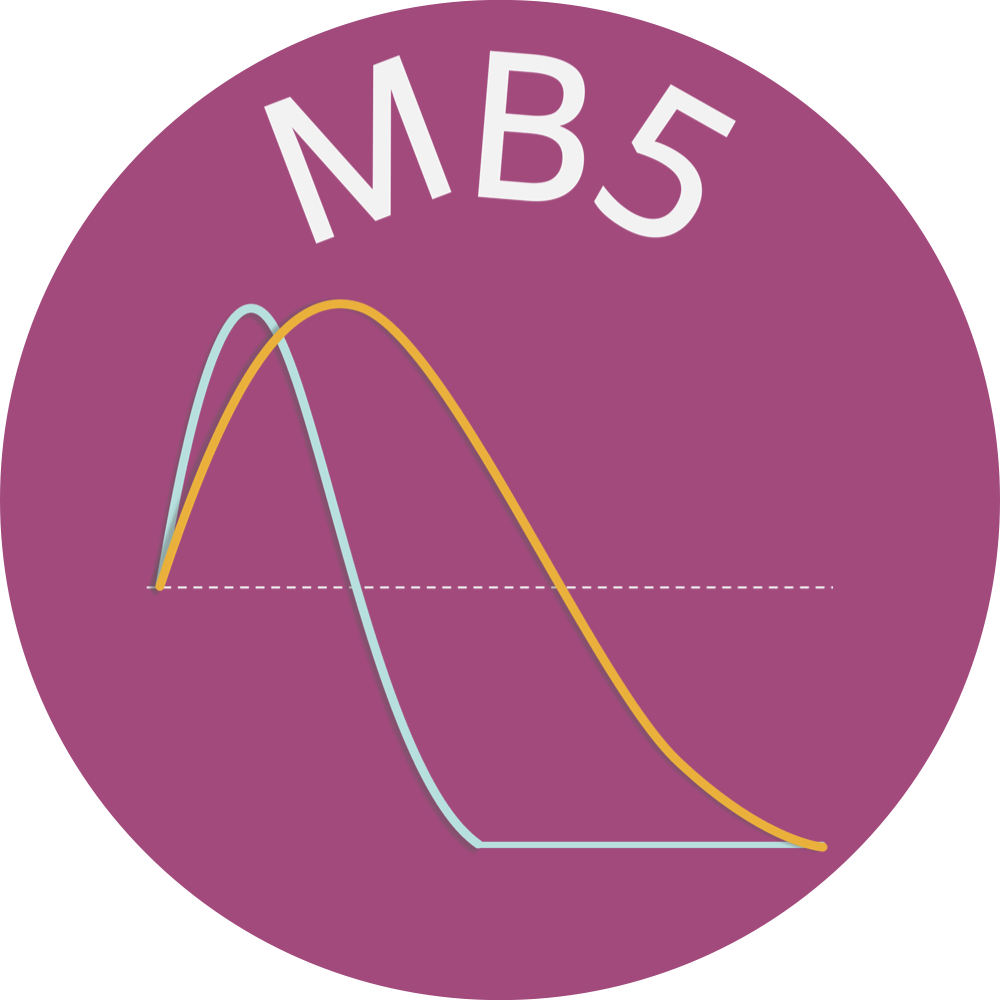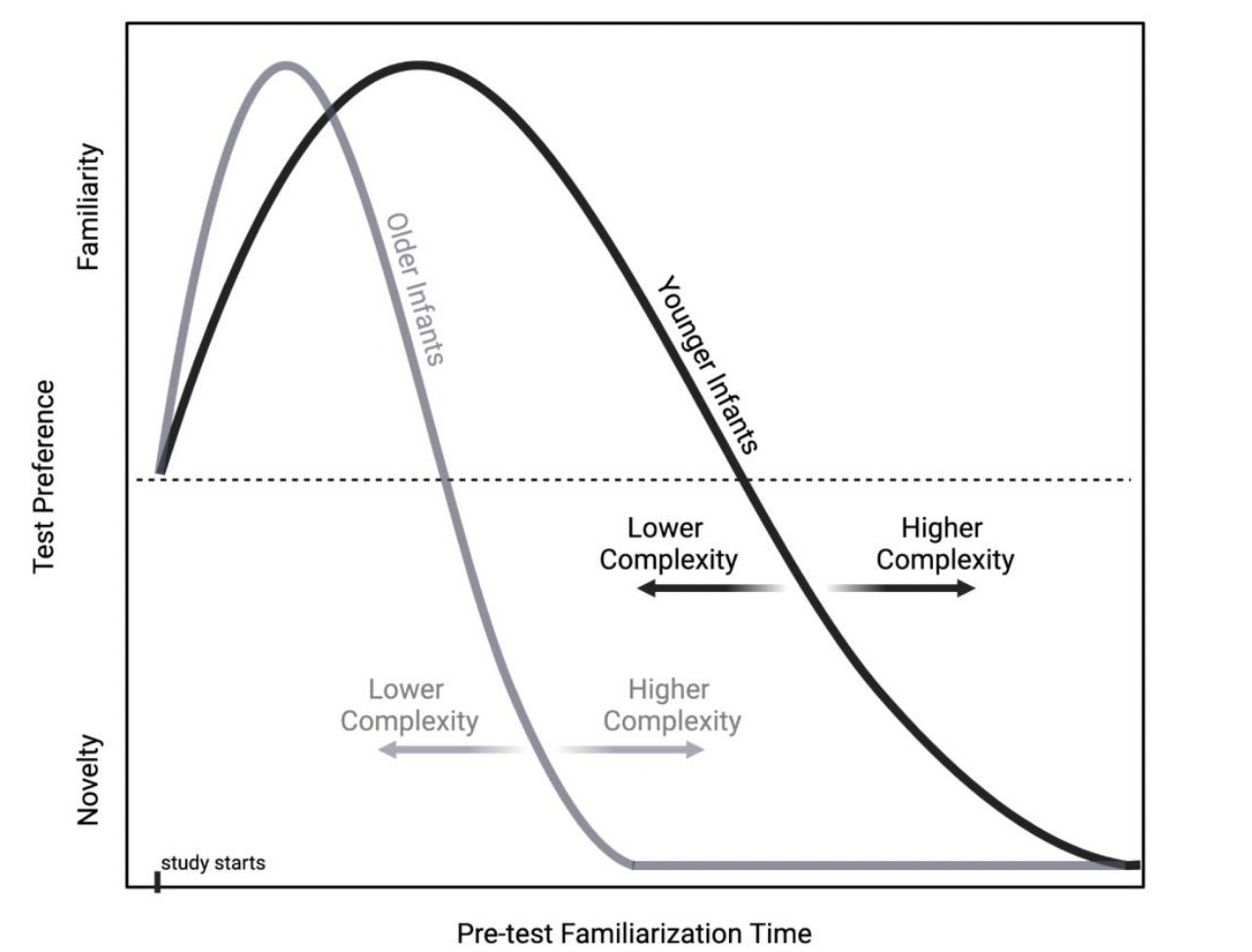
Project Overview
- Status: Piloting; Prepping for data collection
- Stage 1 Registered Report given 'In Principle Acceptance' at Nature Human Behaviour
Familiarity and novelty effects are the cornerstone of many infant behavioral methods (e.g., habituation, head-turn preference, preferential looking / looking-while-listening, eye tracking). In this ongoing project we investigate Hunter and Ames’ (1988) model of infants’ preference for familiar and novel stimuli. We aim to empirically test whether infant age, task difficulty, and familiarization time interact to predict the direction of infants’ preference for familiar vs. novel stimuli. By comprehensively testing the Hunter and Ames model, we will solidify our foundational understanding of infant curiosity and provide the most comprehensive, global picture of the early foundations of infant cognition to date.

Figure 1. This figure (adapted from Bergmann and Cristia, 2016) depicts Hunter & Ames’ model of infant looking to familiar (plotted up) and novel (plotted down) stimuli at different levels of pre-test familiarization time (shown on the x-axis; Figure 1). The dashed line indicates equal preference for familiar and novel stimuli. The grey line represents the model’s prediction for older infants, and the black line for younger infants. The “lower complexity” and “higher complexity” arrows indicate how the proposed relation between age and familiarization time might shift with variation in stimulus complexity (i.e., the current operationalization of task difficulty).
Links
- Materials, Protocols, and Documentation: MB5 Lab Manual, MB5-OSF, MB5 Collaboration Agreement
- Listserv: join here (click on “for access, try joining the group”)
- Slack group: MB workspace (join the #mb5-general channel)
- MB5 Project Tracker
Leads
- General Contact: mb5@manybabies.org
- Jessica Kosie, Arizona State University, United States [email]
- Martin Zettersten, University of California, San Diego, United States [email]
- Casey Lew-Williams, Princeton University, United States [email]
MB5 Contributors
We encourage everyone who is interested in the project to subscribe to the MB5 listserv and/or email the Project Leads (mb5@manybabies.org) to indicate your interest. To add your name to this list of contributors, fill out the MB Dashboard form. Please note that access to infants/an infant lab is NOT a prerequisite.
NOTE: Default table ordering is by contributor’s first name. You can filter, group, and/or sort entries by any field.
Publication
Stage 1 Registered Report (preprint)
Kosie, J. E.*, Zettersten, M.*, Abu-Zhaya, R., Amso, D., Babineau, M., Baumgartner, H. A., Bazhydai, M., Belia, M., Benavides, S., Bergmann, C., Berteletti, I., Black, A. K., Borges, P., Borovsky, A., Byers-Heinlein, K., Cabrera, L., Calignano, G., Cao, A., Cox, C. M. M., … Lew-Williams, C. (2024, March 1). ManyBabies 5: A large-scale investigation of the proposed shift from familiarity preference to novelty preference in infant looking time. PsyArXiv. https://doi.org/10.31234/osf.io/ck3vd (*co-first authors)
To cite, use (Kosie & Zettersten et al., accepted pending data collection)
Additional authors will be added to the Stage 2 Registered Report after data analysis is complete
Spin-off Projects
- MB5-Meta: Systematic review of infant familiarity/novelty preference
- MB5N: Naturalistic Interactions
Funding
- MB5 is supported by an Early Career Award from the Einstein Foundation Berlin
Credit/© Einstein Foundation Berlin/2470 Media GmbH